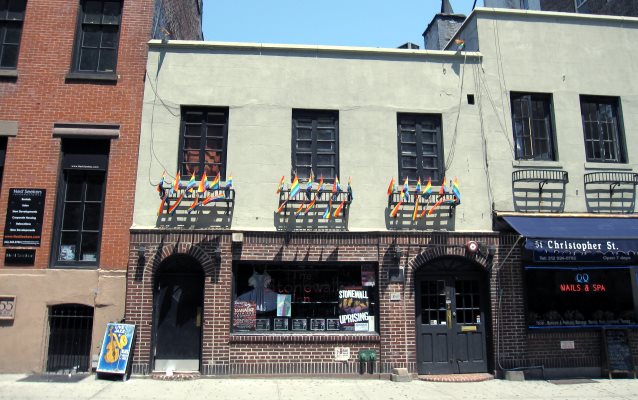June is Lesbian, Gay, Bisexual, Transgender and Queer (LGTBQ+) Pride Month. This month-long celebration demonstrates how LGBTQ+ Americans have strengthened our country, by using their talent and creativity to help create awareness and goodwill. The first Pride March in New York City was held on June 28, 1970, on the one year anniversary of the Stonewall Uprising.
This resource guide includes information and resources for anyone interested in learning more or doing research on Pride Month and key figures and events in the LGBTQ+ community and history.
 The History of the Pride Flag [Free Library of Philadelphia]
The History of the Pride Flag [Free Library of Philadelphia]
The Pride Flag as we know it today has gone through several iterations since its birth in 1978. It has a long and rich history that started in San Francisco with artist Gilbert Baker, who met a local activist who urged him to create a symbol to represent the gay community. That activist was Harvey Milk, who later became California’s first openly gay politician elected to office. Baker soon presented Milk with a flag that consisted of eight brightly-colored stripes, each color with a specific meaning. The original colors were hot pink for sex, red for life, orange for healing, yellow for sunlight, green for nature, turquoise for magic and art, indigo for serenity, and violet for spirit. In June of 1978, Harvey Milk along with many others, proudly waved this flag on full display during a procession in the San Francisco Gay Freedom Day Parade.
The flag remained unchanged until 2017, when Philadelphia's Office of LGBT Affairs unveiled a new Pride flag with two new colors: black and brown. The addition of these colors was to represent a new day of racial inclusion in LGBTQ+ communities, while paying homage to the sacrifices Black and Brown people have made through their activism. Many cities followed suit and adopted this new flag to show their pride.
 The Stonewall Uprising of 1969 [Library of Congress]
The Stonewall Uprising of 1969 [Library of Congress]
In 1969, the Stonewall Inn was one of the most popular gay bars in New York City. Throughout the state it was illegal to serve alcohol to a gay person until 1966, and in 1969, homosexuality was still considered a criminal offense. This led many gay establishments to operate sans liquor license, providing an open door for raids and police brutality. The Stonewall Inn was owned by the mafia, and as long as they continued to make a profit, they cared very little about what happened to their clientele. The police raids on gay bars and spaces were not isolated to the East and West coasts, but were a phenomenon happening across the U.S. during this time.
The first Pride march was held on June 28 1970, the one year anniversary of the Stonewall Uprising. Primary sources provide detailed information about how this first Pride march was planned, and the reasons why activists felt so strongly that it should exist. To get planning underway, activists formed the Christopher Street Liberation Day Committee. From the outset, the committee defined its aim of holding a massive march at the culmination of Gay Pride Week (June 22-28). This, the first U.S. Gay Pride Week and March, was meant to give the community a chance to gather together to "...commemorate the Christopher Street Uprisings of last summer in which thousands of homosexuals went to the streets to demonstrate against centuries of abuse ... from government hostility to employment and housing discrimination, Mafia control of Gay bars, and anti-Homosexual laws." The Stonewall Inn has now been designated as a National Monument.
